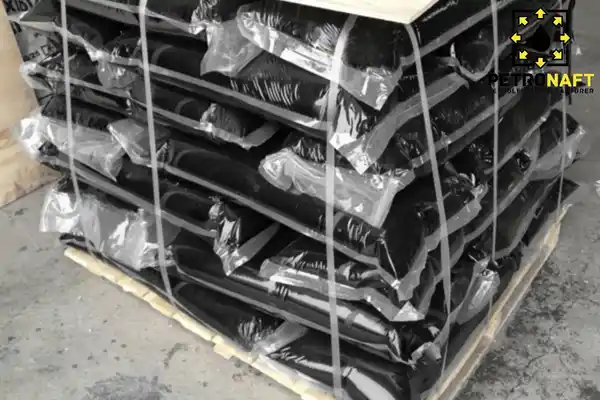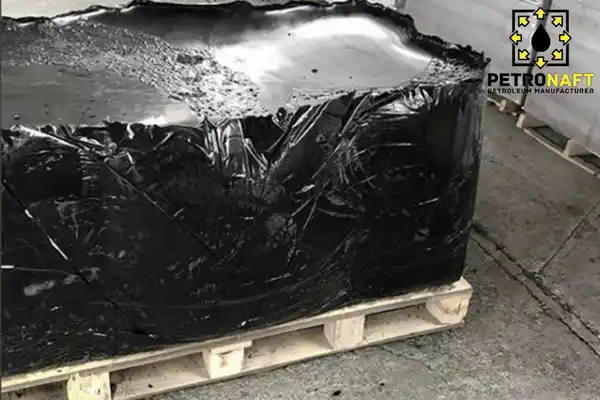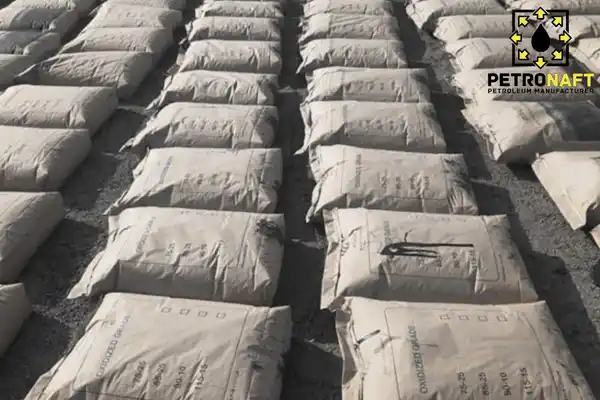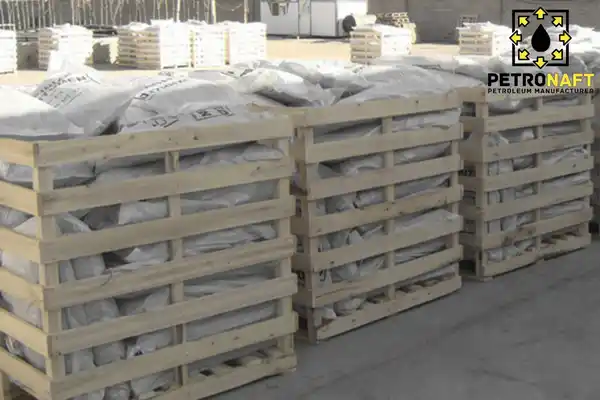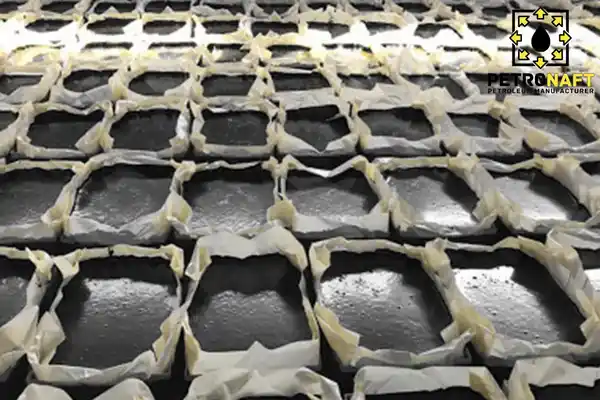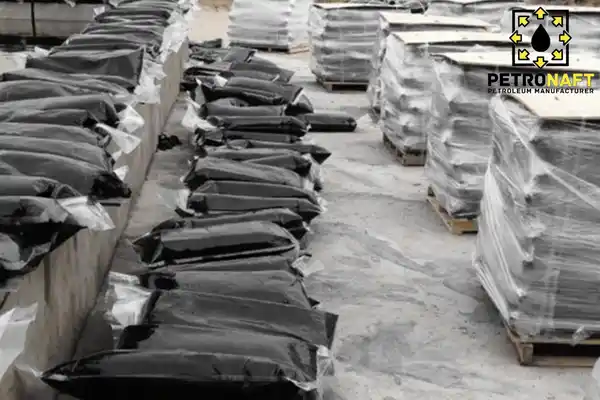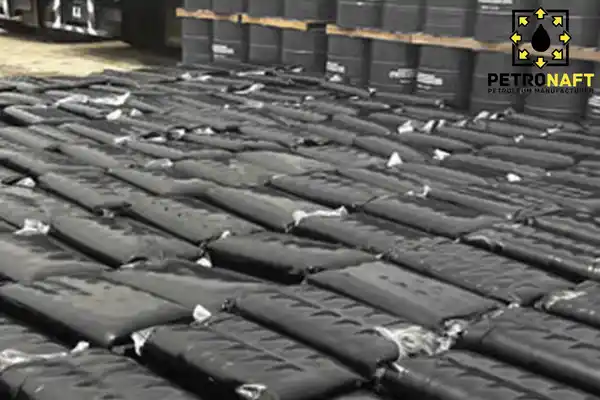OXIDIZED BITUMEN 110/30
DESCRIPTION OF OXIDIZED BITUMEN 110/30
By allowing air to enter through it, pure bitumen, which is sometimes referred to as bitumen 60-70, can be transformed into oxidized bitumen 110/30. This substance is also known as blown bitumen 110/30 or blown asphalt 110/30. Both of these names refer to the same thing. These are two distinct monikers for the same thing, which share the same object. The oxidized bitumen 110-30 has a softening point that is significantly higher than that of conventional bitumen, despite the fact that it has a penetration grade that is significantly lower than that of conventional bitumen. This asphaltene in this bitumen has the ability to polymerize when it is subjected to airflow, which grants the bitumen the capacity to stretch when it is put in contact with air. The letter R in the designation of this specific variety of bitumen denotes that it possesses characteristics that are like to those of rubber. The term “rubberized bitumen” is the name that has been given to this specific variety.
Rubberized bitumen is typically the material of choice when it comes to paving streets and other types of outdoor surfaces. These measurements represent not only the depth of penetration but also the point at which the material starts to become more flexible. In the case of oxidized bitumen, the bitumen in issue has a penetrability grade of 30 and a softening point of 110, for example, if it is graded as oxidized bitumen R110/30.
We produce oxidized bitumen 110/30 ( blown asphalt 110/30 ) of the best quality in a variety of types and export them from Iran and the United Arab Emirates to other nations worldwide.
- Iran Oxidized Bitumen 110/30 ( Iran Blown Asphalt 110/30 )
- Emirates Oxidized Bitumen 110/30 ( Emirates Blown Asphalt 110/30 )
OXIDIZED BITUMEN 110/30 PRODUCTION PROCESS:
In order for the oxidized bitumen 110/30 to be generated in the BBU reactor, which is housed in the refinery, the pen bitumen must first be heated to a temperature range that falls between 240 and 270 degrees Celsius by hot air. Only then can the process begin. As a consequence of this, it is of the utmost importance that the temperature that is kept within the refinery at all times be kept at a consistent level that ranges between 220 and 230 degrees Celsius. The presence of heated air in the environment surrounding the reactor makes a direct contribution to the interaction that takes place within the reactor itself between the hydrogen atoms in the bitumen and the oxygen atoms in the air.
The presence of warm air is what first causes the reaction to take place. An instantaneous reaction takes place as soon as the bitumen comes into touch with the air in the environment in which it is located. It begins to produce steam as soon as it hits that threshold, and that steam must to be evacuated from the oxidation chamber as soon as it is produced in order for the reactor to continue functioning in the manner that it was designed to. It is necessary to first depressurize the area and then evacuate it in order to put a halt to the creation of steam before the location can be considered safe. This is a factor that has an immediate and direct contribution to the formation of blown bitumen.
OXIDIZED BITUMEN 110/30 ADVANTAGES:
The following is a list of the top benefits offered by oxidized bitumen 110/30, in no particular order: very high cumulative water resistance, very high pliability, very high durability, and very good chemical element stability.
OXIDIZED BITUMEN 110/30 SPECIFICATION:
| Bitumen 110/30 | Test method | Unit | Specification |
| Specific gravity @25/25 C | ASTM D70 | (Kg/m3) | 1.05 approx. |
| Penetration @ 25°c | ASTM D5 | mm/10 | 10/25 |
| Softening point °c | ASTM D36 | °C | 100/120 |
| Loss on heating(wt) % | ASTM D6 | Wt. % | 0.2 max |
| Flashpoint c | ASTM D92 | °C | 230 min |
| Solubility is CS2(wt) % | ASTM D4 | Wt. % | 99 max |
| Ductility @ 25 °c | ASTM D113 | 2 min |
APPLICATIONS OF OXIDIZED BITUMEN 110/30
Oxidized bitumen 110/30 is versatile and can be utilized for a variety of projects, including constructing roads and installing hydroelectric infrastructure. Additionally, it is used in the electrical, flooring and mastics, roofing, oil and gas, and other industries.
- The material that must be utilized for the canal lining in hydro projects is blown bitumen 110-30. This specific kind of bitumen may be used for a variety of hydro projects, including the building of embankments, dams, and hydraulic structures, the maintenance and defense of dam linings, the stabilization of sand, and more.
- Roofing: Bitumen Asphalt 110-30 is required for the manufacture of roofing felts, shingle roofs, damp-proof coating compositions, carriage roofing compounds, liquid roof coatings, and plastic cements. The roofing business makes diverse uses of all of these materials. It is also used in the manufacture of liquid roof coverings. Additionally, it is used in the manufacturing of components for carriage roof construction. This technique is, by far, the most successful one now available for minimizing water damage to roofs.
- Flooring: One of the bitumen oxidized 110/30’s most popular applications is the installation of flooring. Roofs are another typical use for this material. This is a result of the material’s exceptional resilience and little probability of slipping. It is also possible to use bitumen mastic that is acid- and alkali-resistant. This form of mastic may be used to coat building surfaces to prevent corrosion. This group includes, but is not limited to, steel factories, chemical plants, fertilizer plants, and many other kinds of facilities. To protect metal from corroding, one might adopt a variety of preventive measures. The original condition of old parquet flooring may also be restored using this method.
- Bitumen 110/30 is a material used to make laminated boards that are marketed to the electrical sector. This product is widely employed in a variety of tasks and endeavors connected to the electrical industry. Electrical connection box covers may be secured using this method. Not only are lithium-ion batteries and wires produced using this chemical, but cables are also produced using it. Oil and gas pipelines typically use 110/30 oxidized bitumen as a supplementary barrier against corrosion and rust.
- For paving new roads, enlarging already-existing ones, and performing necessary maintenance, oxidised bitumen 110/30 can be utilized. All of this is made possible by the usage of this product. In order to make asphalt, which is used to pave roads, parking lots, railroad tracks, and other surfaces, it may be added as an additive.
We manufacture the highest quality Oxidized Bitumen 110/30 ( Blown Asphalt 110/30 ) in different types and export it from Iran and the UAE to other countries around the world.
- Oxidized Bitumen 110/30 Iran ( Blown Asphalt 110/30 Iran )
- Oxidized Bitumen 110/30 UAE ( Blown Asphalt 110/30 UAE )
PACKING OF OXIDIZED BITUMEN 110/30
25Kg Kraft Bag, 25Kg Polyamide Bag, Carton, Drum, and Bulk.

